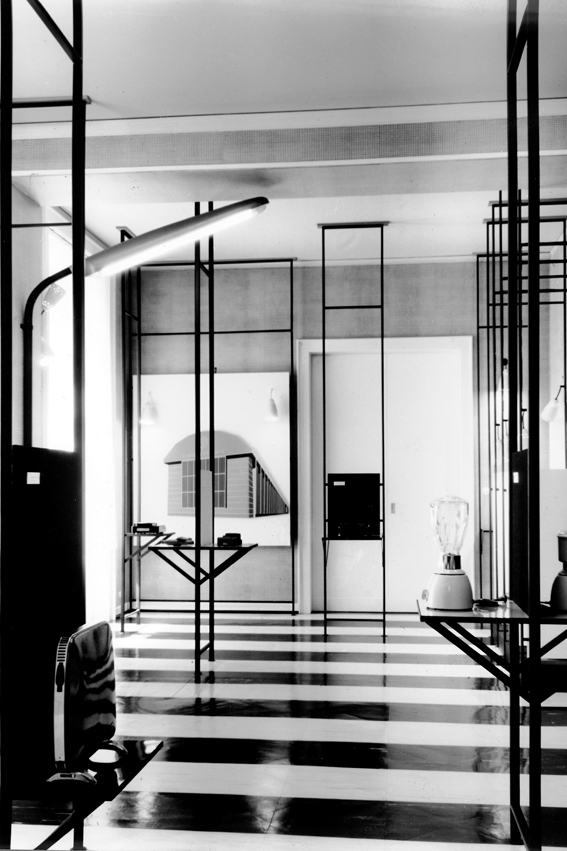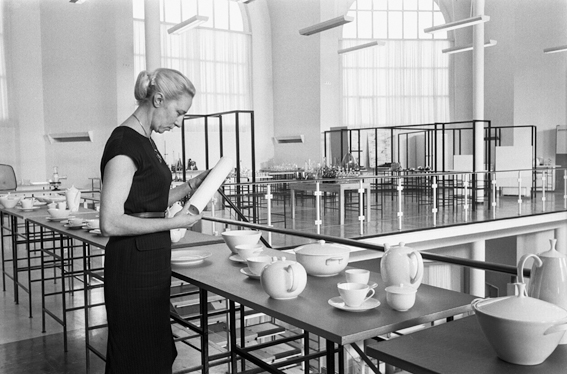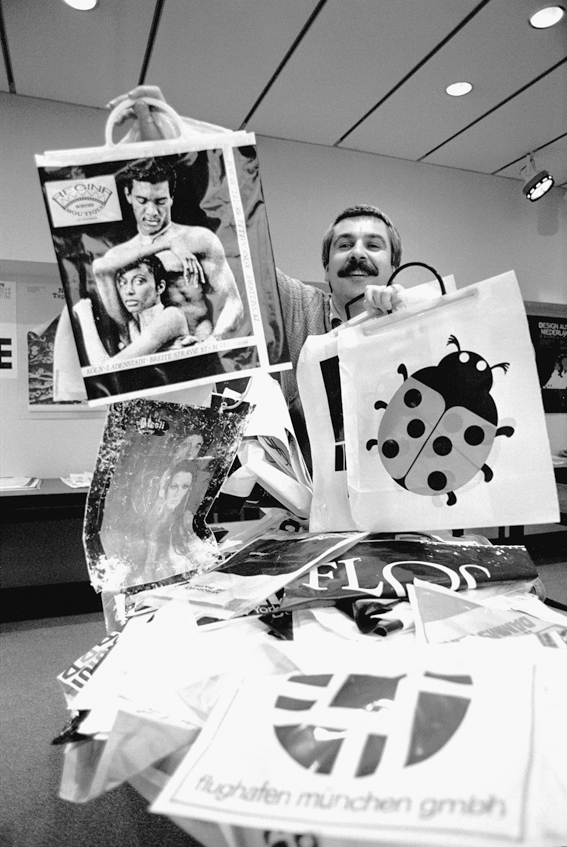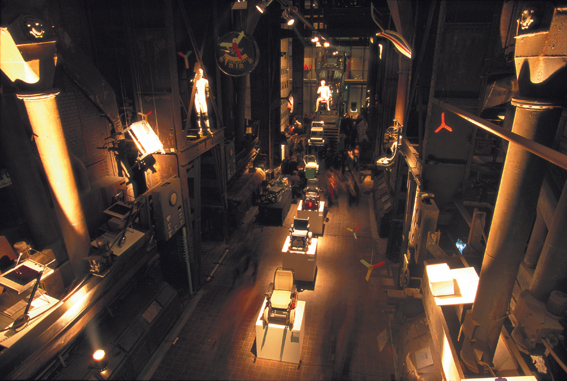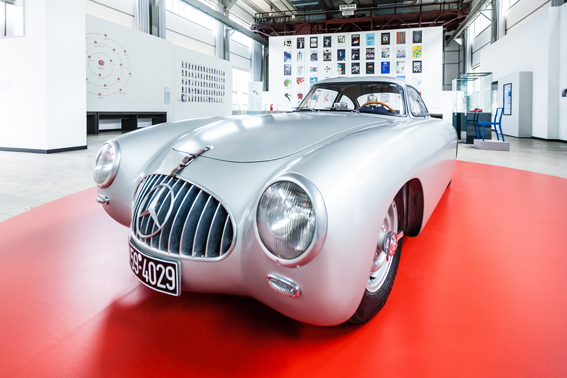What began in 1955 as “Ständige Schau formschöner Industrieerzeugnisse” (Permanent Show of Elegant Industrial Products) in Villa Hügel in Essen, Germany, has now become the world’s largest exhibition of contemporary design. The Red Dot Design Museum currently houses around 2,000 international design objects in the former boiler house of the Zeche Zollverein Coal Mine Industrial Complex.
Foundation of the “Industrieform e.V.”
On 30 July 1954, the association “Industrieform e.V.” was founded at the initiative of the head of Krupp’s PR department Carl Hundhausen in Essen, Germany. It was meant to promote quality in design even for industrial products. The aim was to establish a “Permanent Show of Elegant Industrial Products”. Back then like today, all exhibits were assessed by an independent expert jury and granted a distinction for their excellent design quality in the course of a competition – from which today’s Red Dot Design Award originated.
“Permanent Show of Elegant Industrial Products” at Villa Hügel (1955–1961)
On 5 October 1955, the “Ständige Schau formschöner Industrieerzeugnisse” (Permanent Show of Elegant Industrial Products) was opened in the “Kleines Haus” (Small House) at Villa Hügel. It was part of Krupp’s new post-war image, but primarily directed the attention of the German industry to the topic of design. The glamorous opening ceremony highlighted its major significance. The show presented products which had been selected by a jury for their attractive design. The exhibition rooms, designed by architect Paul Mahlberg, were characterised by a puristic appearance, while the items were presented in an objective style. From china, furniture and household appliances to the latest technical innovations: Well-designed products were accessible to a broad section of the population for the first time. The exhibition thus contributed to an appreciation of aesthetics and to the modern-day understanding of design culture.
New location in the Old Synagogue (1961–1979)
When Krupp planed an exhibition on the history of the company in Villa Hügel in 1961 to mark its 150th anniversary, the exhibition moved to the Old Synagogue, which has stood vacant since the arson attacks of the Reichspogromnacht in 1938. There was an intensive debate surrounding the new use of the Jewish sacred building, which ultimately gave way to broad consensus. The modern staircase in the hall lent “Haus Industrieform” an unmistakable design. At that time, the focus of the exhibitions became more global, what found its expression in special events on design from Italy and Finland. Moreover, German design was displayed in shop windows in Stockholm, Sweden. In 1979, a short circuit led to a fire that destroyed the exhibition and the interior of the Old Synagogue and resulted in an interruption in the history of the “Haus Industrieform”.
Opening in the Amerikahaus (1980–1988)
The new location in the Amerikahaus was not opened until a year and a half later. Located in the city’s centre, it was considerably smaller than the Old Synagogue. During these years, the content focused more on consumers – with exhibitions on the design of plastic bags, bumper stickers or solutions for living spaces in cooperation with the IKEA Foundation.
Again relocation: former city library (1988–1997)
The move to the “Alte Stadtbibliothek” (former city library) marked a major new direction for “Haus Industrieform”. In 1990, the association’s name was changed to Design Zentrum Nordrhein Westfalen. A new corporate design reflected the changing identity. Two years later, the “Roter Punkt” (red dot) was awarded for the first time, and the conference entitled “Design quo vadis?” exploreed future prospects. In addition to the competition for product design, a separate contest for communication design was announced in 1993. Exhibitions e. g. in Tokyo, Singapore and Taipei highlighted the international gearing, with Asia becoming a focal area.
Today’s domicile of the Red Dot Design Museum: boiler house at Zollverein coal mine (from 1997)
The Zeche Zollverein Coal Mine Industrial Complex which was abandoned in 1986 was discussed as a potential design location in the early 1990s. As early as 1995, the Design Zentrum Nordrhein Westfalen carried out a study by examining the possibility of upgrading the Zollverein location to that of a Design Park, and offered itself to be the first renter on that area. From 1995 to 1996, the former boiler house was converted by Lord Norman Foster for its new purpose – the beginning of a new era. On 29 April 1997, the design exhibition opened at the former Zeche Zollverein Coal Mine Industrial Complex which was declared World Cultural Heritage by the UNESCO on 14 December 2001 – and with it the former boiler house which houses the Red Dot Design Museum today. Ever since, more than 4,000 square metres of presentation space on five floors provide scope for the world’s largest exhibition of contemporary design. The Red Dot Design Museum became a local nucleus for the development of the Zollverein site as a design location, while at the same time the internationalisation process progressed through the establishment of dedicated locations in Singapore (2005) and in Taipei (2013).
"Enduring, not ultimate form": 60 years of design history in Essen – from "Industrieform" to Red Dot
60 years after the first exhibition, the Red Dot Design Museum and the Ruhr Museum reconstructed the first “Permanent Show of Elegant Industrial Products” from 1955, showing a large number of exhibits from that time. From 29 June until 23 August 2015, they presented the exhibition “Enduring, not ultimate form” in Hall 5 at Zollverein UNESCO World Heritage Site and told “60 years of design history in Essen – from ‘Industrieform’ to Red Dot”. Current and historical exhibits were on show, elements of past presentations were reconstructed, and eyewitness accounts documented alongside posters and photographs from 60 years of design history. A highlight of the exhibition was the legendary Mercedes-Benz 300 SL which had been presented as a poster only in the first exhibition and was exhibited as original 60 years later. The patron of the exhibition was the President of the German Bundestag, Prof. Dr. Norbert Lammert. The title of the exhibition “Enduring, not ultimate form” is a quote by journalist Clara Menck that stems from the time of the first “Industrieform” exhibition. It describes design as a permanent task to optimise the environment created by people and thus to secure their existence going forward.


